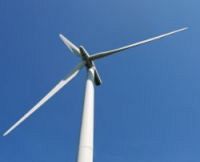

Recently, scientist's research has discovered that the world's shifting ocean circulation patterns may have triggered a rapid increase in the speed of winds for the past 10 years - since the late 1970s, the international research team had analysed data from near to 9,000 weather stations across the world, and they found that the wind speeds had unexpectedly increased following a slowdown that lasted three decades.
The lead author of the report, Dr Zhenzhong Zeng (a professor at Princeton University) has said that the research team was surprised by the findings - they had originally set out to study the slowdown of global wind speeds, while in the end, they obtained opposite results.
The faster than expected wind speeds could serve to help increase the amount of renewable electricity that is generated by windfarms - most notably by around more than a third to 3.3 million kilowatt-hours (kWh) by 2024. Zeng believes that the unexpected acceleration is likely to have played a bigger role in actually improving the efficiency of windfarms throughout the US, certainly more so than technological innovations have done.
The research paper suggests that the faster global speeds may continue for at least another decade - this can provide a major boost for windfarm owners. Dr Adrian Chappell - a professor at Cardiff University, and a co-author of the report - has said that the rapid increase in global wind speeds will bode well for the expansion of renewable energy, something that is crucial in keeping the global heating down to below 2°C. The findings mark a major reversal in a trend that has been seen over the past three decades - decreasing wind speeds, known as global terrestrial stilling - which had originally threatened to halve the world's wind power potential by the end of the century, but now no longer poses that issue.
Previous studies showed that an increased "roughness" on the Earth's surface (varying from new buildings and urbanisation) has worked to act as a buffer by slowing the speed of winds by up to 2.3% every decade since the late 1970s. Now, however, the latest research has demonstrated that instead, a combination of the large-scale ocean and atmospheric circulation patterns could be making wind speeds faster again - the main drivers for this effect being the:
Zeng stated that the effect of global heating on global wind speeds remained largely uncertain because rising temperatures could have a diverse range of impacts that are not fully understood as of now; Zeng commenting, "We believe our study advances understanding on how climate change affects wind, and we appeal for more scientists to focus on this important climate variable." He added that "The study of wind can also shed light on the dynamic mechanisms of climate change."